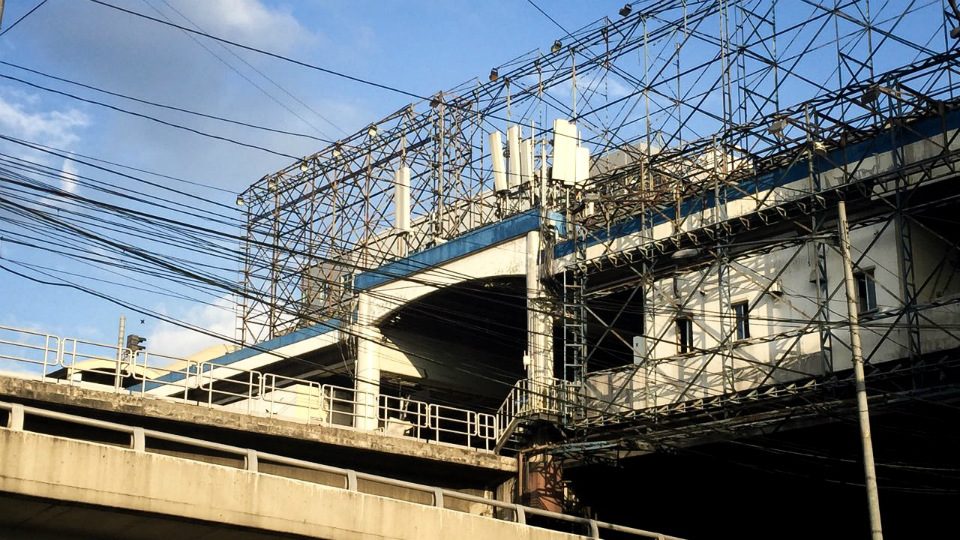SUMMARY
This is AI generated summarization, which may have errors. For context, always refer to the full article.

MANILA, Philippines – More trains are now available for about 300,000 Filipino commuters in the metro.
The Metro Rail Transit Line 3 (MRT3) fielded 11 trains on Thursday, March 15 at 5:38 pm in time for pay day rush hour. The last time there were 11 trains running was last January 29. (READ: After a month, MRT3 finally deploys 10 trains)
“On March 15, we were finally able to run more than 10 trains – 11 trains to be exact. It was [in] January when we last dispatched more than 10 train sets for revenue operations,” MRT3 media relations officer Aly Narvaez told Rappler.
Narvaez said they attribute the improvement to the ongoing delivery of spare parts. The first batch of spare parts was delivered mid-February.
She added, “70% of the spare parts have been delivered and installment of these parts is currently ongoing.”
Narvaez said the procurement process usually takes 3 to 6 months but the Department of Transportation (DOTr) and the MRT3 Maintenance Transition Team were able to accelerate the process.
As the MRT3 continued to field an average of 10 trains this week, ridership increased to about 300,000 from last week’s average of 280,000 daily.
More trains
On Monday, March 12, there were 8 trains running at 6 am. Another train was in operation by 7 am but by 3 pm, there were 10 trains. The MRT3 was able to maintain 10 working trains for the rest of the day and was able to serve 300,000 commuters.
On Tuesday, March 13, similar to how Monday opened, there were 8 trains by 6 am and 9 trains by 7 am. By 12 noon, 10 trains were serving MRT3 riders. The day closed with 10 trains again, serving 285,000 passengers.
On Wednesday, March 14, 9 trains were available for the riding public at 6 am. By 8 am, 10 trains were running. Some 285,000 passengers rode the MRT3 that day.
On Thursday, March 15, the MRT3 suffered from a glitch at 5:37 am, a few minutes after the revenue line opened. Around 200 passengers were unloaded at Quezon Avenue Station due to electrical failure in the motor.
Despite the glitch, there were 10 working trains by 6 am. By 5:38 pm, 11 trains were deployed by the MRT3 – more than the daily target number of trains this month.
On Friday, March 16, the day opened with 10 trains. By 1 pm, 11 trains were running for the rest of the day.
Maintenance
Narvaez said that the MRT3 team will be conducting maintenance activities longer than usual.
“During the Holy Week, we will be allocating 5 days, instead of the usual 4 days, for the maintenance activities,” Narvaez said. Maintenance will be done from March 28 up to April 1 instead. (READ: DOTr promises better MRT3 services by 2nd quarter of 2018)
Experts from the Australian Agency for International Development (AusAID) and Asian Development Bank (ADB) joint advisory panel will join the MRT3 team during the maintenance services, she said.
By April, DOTr Secretary Arthur Tugade promised that there should be at least 15 running trains for the public to use.
The MRT3 suffered 4 breakdown incidents in March – two of which were due to signalling problems while the other two were caused by electrical failure in the affected train’s motor. There have been a total of 42 incidents since 2018 started.
In 2017, there were 516 MRT3 glitches recorded – almost 10 incidents a week. (READ: MRT3 suffers almost daily breakdowns since start of 2018)
Weighing Dalian trains
The assessment of the “overweight” 48 trains delivered by China-based CRRC Dalian Company Limited was due on March 10 by German firm TUV Rheinland.
However, the DOTr said the assessment is not yet completed and further routine tests are to be conducted.
In a statement, the transportation department said that weighing test of Dalian trains will be done once again, but this time in Manila.
“Among the tests that TUV Rheinland recommended to be conducted is a weighing test of the Dalian trains in Manila, because the previous project team for the project failed to attend and witness the weight testing done in Dalian, China in November 2015,” the DOTr said.
In February, an expert said during a Senate hearing on the MRT3 that the 48 Dalian trains are “not overweight” and within the allowable limit that the train tracks can carry.
But earlier this month, Tugade urged the public to wait for audit results of the Dalian trains to be sure whether these are safe for the public to use.– Rappler.com
Add a comment
How does this make you feel?
There are no comments yet. Add your comment to start the conversation.